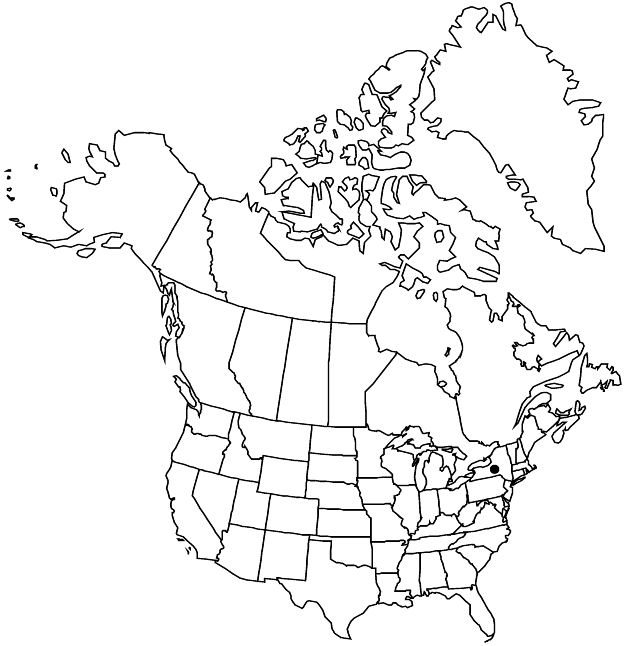Difference between revisions of "Cotoneaster cochleatus"
Wiss. Z. Martin-Luther-Univ. Halle-Wittenberg, Math.-Naturwiss. Reihe 6: 952. 1957.
FNA>Volume Importer |
imported>Volume Importer |
||
| (3 intermediate revisions by 2 users not shown) | |||
| Line 15: | Line 15: | ||
|name=Cotoneaster buxifolius | |name=Cotoneaster buxifolius | ||
|authority=Wallich ex Lindley forma cochleatus Franchet | |authority=Wallich ex Lindley forma cochleatus Franchet | ||
| + | |rank=species | ||
|publication_title=Pl. Delavay., | |publication_title=Pl. Delavay., | ||
|publication_place=224. 1890 (as buxifolia forma cochleata) | |publication_place=224. 1890 (as buxifolia forma cochleata) | ||
| Line 21: | Line 22: | ||
|name=C. microphyllus var. cochleatus | |name=C. microphyllus var. cochleatus | ||
|authority=(Franchet) Rehder & E. H. Wilson | |authority=(Franchet) Rehder & E. H. Wilson | ||
| + | |rank=variety | ||
}} {{Treatment/ID/Synonym | }} {{Treatment/ID/Synonym | ||
|name=C. thymifolius var. cochleatus | |name=C. thymifolius var. cochleatus | ||
|authority=(Franchet) Franchet | |authority=(Franchet) Franchet | ||
| + | |rank=variety | ||
}} | }} | ||
|hierarchy=Rosaceae;Rosaceae subfam. Amygdaloideae;Rosaceae tribe Gillenieae;Cotoneaster;Cotoneaster cochleatus | |hierarchy=Rosaceae;Rosaceae subfam. Amygdaloideae;Rosaceae tribe Gillenieae;Cotoneaster;Cotoneaster cochleatus | ||
| Line 39: | Line 42: | ||
|elevation=0–50 m | |elevation=0–50 m | ||
|distribution=N.Y.;Asia (China);introduced also in Europe. | |distribution=N.Y.;Asia (China);introduced also in Europe. | ||
| + | |introduced=true | ||
|discussion=<p><i>Cotoneaster cochleatus</i> was treated as a variety of <i>C. microphyllus</i> by L. Lingdi and A. R. Brach (2003); here the two are distinguished at species rank, following H. Nybom et al. (2005). Plants of <i>C. microphyllus</i> have a suberect habit, usually elliptic leaves (rarely broadly obovate) with acute apices, and pomes 6 mm wide; <i>C. cochleatus</i> is always prostrate and has usually obovate leaves (rarely suborbiculate) with blunt apices, and pomes 8–10 mm wide.</p> | |discussion=<p><i>Cotoneaster cochleatus</i> was treated as a variety of <i>C. microphyllus</i> by L. Lingdi and A. R. Brach (2003); here the two are distinguished at species rank, following H. Nybom et al. (2005). Plants of <i>C. microphyllus</i> have a suberect habit, usually elliptic leaves (rarely broadly obovate) with acute apices, and pomes 6 mm wide; <i>C. cochleatus</i> is always prostrate and has usually obovate leaves (rarely suborbiculate) with blunt apices, and pomes 8–10 mm wide.</p> | ||
|tables= | |tables= | ||
| Line 48: | Line 52: | ||
-->{{#Taxon: | -->{{#Taxon: | ||
name=Cotoneaster cochleatus | name=Cotoneaster cochleatus | ||
| − | |||
|authority=(Franchet) G. Klotz | |authority=(Franchet) G. Klotz | ||
|rank=species | |rank=species | ||
| Line 64: | Line 67: | ||
|publication year=1957 | |publication year=1957 | ||
|special status=Introduced | |special status=Introduced | ||
| − | |source xml=https:// | + | |source xml=https://bitbucket.org/aafc-mbb/fna-data-curation/src/2e0870ddd59836b60bcf96646a41e87ea5a5943a/coarse_grained_fna_xml/V9/V9_770.xml |
|subfamily=Rosaceae subfam. Amygdaloideae | |subfamily=Rosaceae subfam. Amygdaloideae | ||
|tribe=Rosaceae tribe Gillenieae | |tribe=Rosaceae tribe Gillenieae | ||
Latest revision as of 22:59, 5 November 2020
Shrubs, to 0.4 m. Stems prostrate or nearly so, carpeting, rooting; branches spiraled and distichous, dense, red to purple-black, slender, initially yellow-green strigose. Leaves persistent; petiole 1–4 mm, strigose; blade obovate to broadly obovate, rarely suborbiculate, 5–14 × 3–9 mm, coriaceous, base obtuse or broadly cuneate, margins slightly revolute, veins 2 or 3, superficial, apex obtuse, sometimes emarginate, abaxial surfaces grayish, reticulate, initially densely strigose-villous, adaxial dark green, shiny, not glaucous, sometimes lightly rugose, glabrescent. Inflorescences on fertile shoots 8–15 mm, usually with 4 leaves, 1(–3)-flowered. Pedicels 3–5 mm, strigose. Flowers 7–10 mm diam.; buds pinkish; hypanthium cupulate, strigose or pilose-strigose; sepals: margins villous, apex obtuse or acute, surfaces initially sparsely pilose-strigose; petals spreading, white, glabrous; stamens (15–)20, filaments white, anthers dark purple; styles 2(or 3). Pomes bright red to crimson, subglobose, 7–9 × 8–10 mm, slightly shiny, not glaucous, sparsely pilose; sepals suberect, sparsely strigose; navel slightly open; style remnants at apex on small projection. Pyrenes 2(or 3). 2n = 68 (Germany).
Phenology: Flowering May–Jun; fruiting Sep–Nov.
Habitat: Forest edges
Elevation: 0–50 m
Distribution

Introduced; N.Y., Asia (China), introduced also in Europe.
Discussion
Cotoneaster cochleatus was treated as a variety of C. microphyllus by L. Lingdi and A. R. Brach (2003); here the two are distinguished at species rank, following H. Nybom et al. (2005). Plants of C. microphyllus have a suberect habit, usually elliptic leaves (rarely broadly obovate) with acute apices, and pomes 6 mm wide; C. cochleatus is always prostrate and has usually obovate leaves (rarely suborbiculate) with blunt apices, and pomes 8–10 mm wide.
Selected References
None.